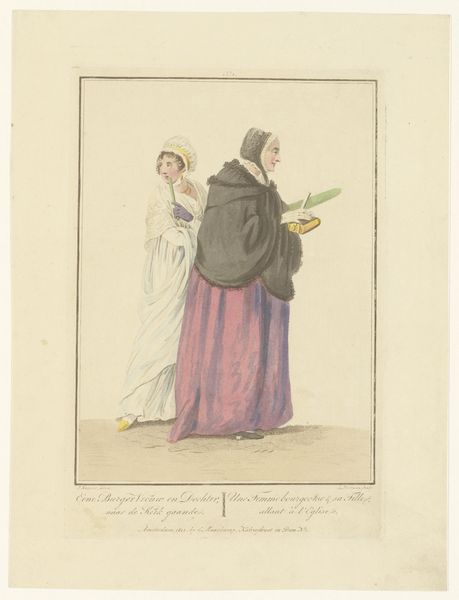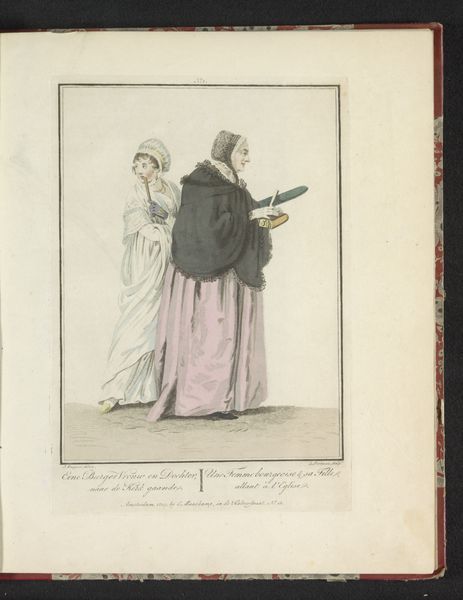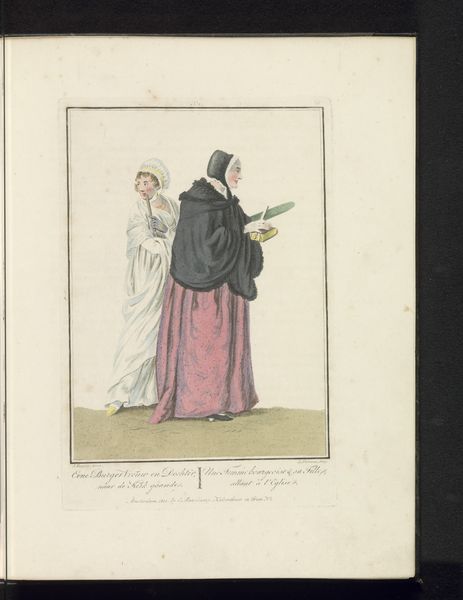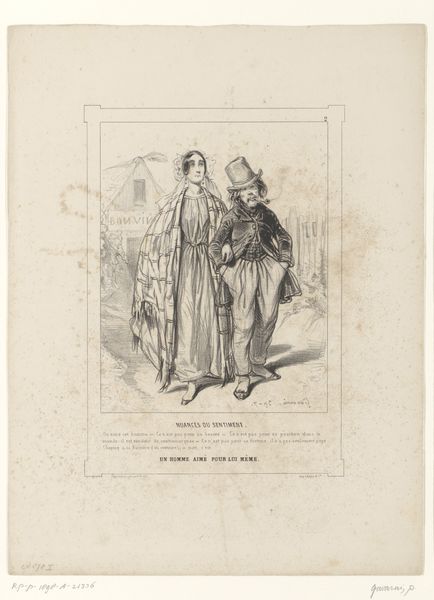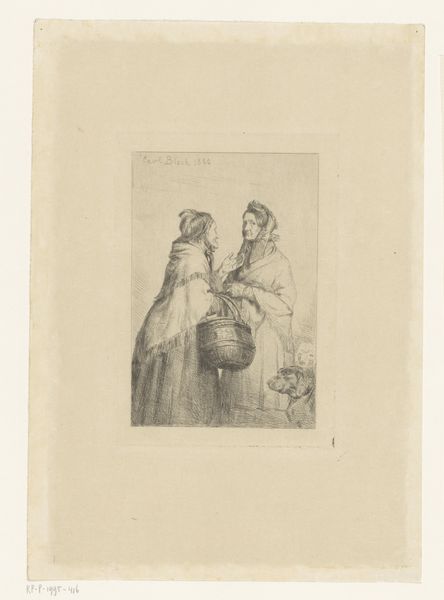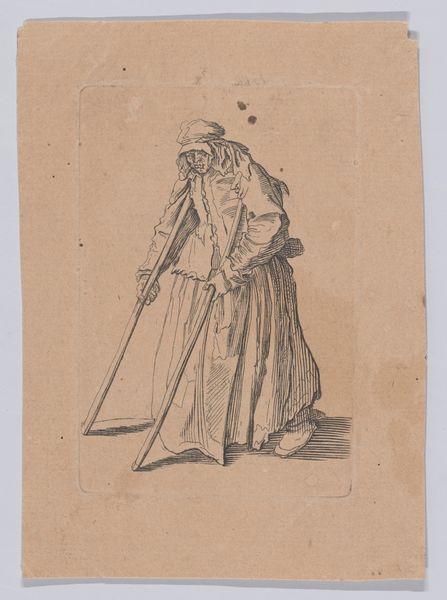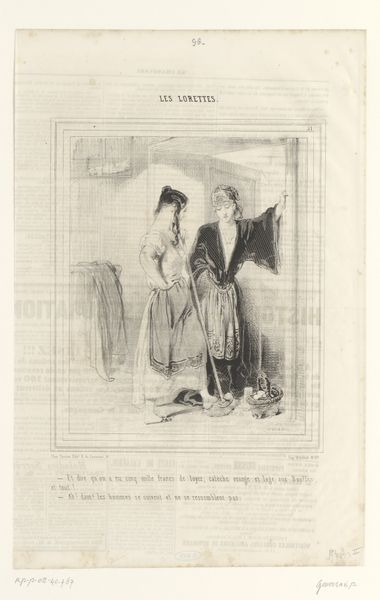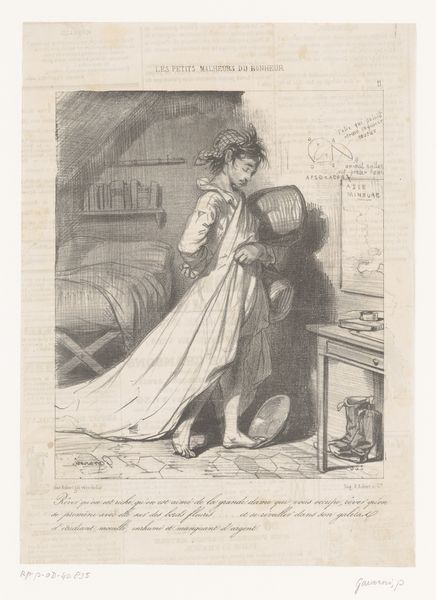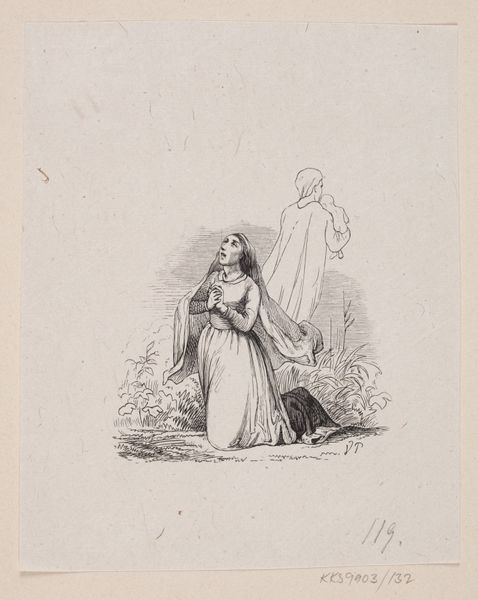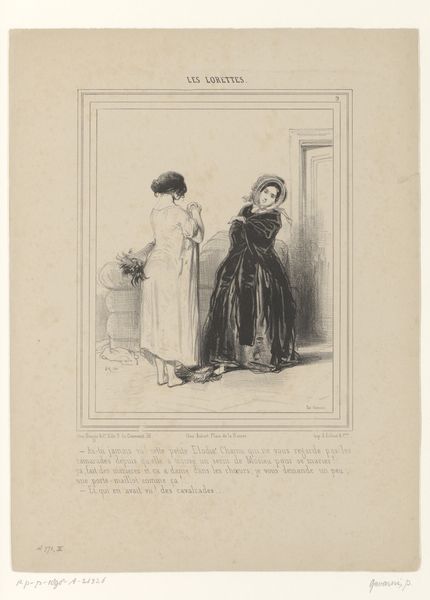
drawing, watercolor
#
portrait
#
drawing
#
watercolor
#
watercolour illustration
#
genre-painting
Dimensions: height 280 mm, width 215 mm
Copyright: Rijks Museum: Open Domain
Editor: This is “Moeder en dochter op weg naar de kerk,” or “Mother and daughter on their way to church,” created by J. Enklaar sometime after 1803. It’s a watercolor drawing. I’m immediately struck by the contrast in their clothing; the mother is in dark, heavy fabrics while the daughter appears in a flowing white dress. How would you interpret this work? Curator: As a materialist, my eye is drawn to the labour embedded within the piece. The very act of rendering figures with such meticulous detail using watercolour speaks volumes about the time and skill invested in production, by both the artist and, in a different sense, the subjects themselves in obtaining the material for the fabrics they wore. The watercolor, itself, would have been manufactured through a complex process, involving extraction of pigments. Consider, too, the paper, the fibres it's comprised of; what socio-economic strata have access to such things? Editor: That's a great point; I was focused on the subjects and their relationships, I hadn’t really considered what it took to produce the art itself. Does the genre painting categorization influence that interpretation? Curator: Absolutely. Genre painting aimed to depict everyday life, but “everyday” varied drastically depending on social class and economic conditions. Examining the costumes, we see the probable profession and class status of these women. It becomes about their consumption, but also, the tradespeople and economies that have arisen so that these women may present themselves at church. Editor: So, the image isn’t just a snapshot of a mother and daughter but a representation of the labor and economic systems that shaped their world? Curator: Precisely. Even the "simple" act of depicting figures relies on complex systems of resource extraction, production, and consumption. We get a glimpse into not only their social standing, but the network of human labour that allowed this "snapshot" to exist. Editor: That's really broadened my perspective. I’ll definitely look at art with an eye to materials and social context going forward. Curator: Excellent! By exploring art in this manner, we may look for our place in its world and within its creation, too.
Comments
No comments
Be the first to comment and join the conversation on the ultimate creative platform.
